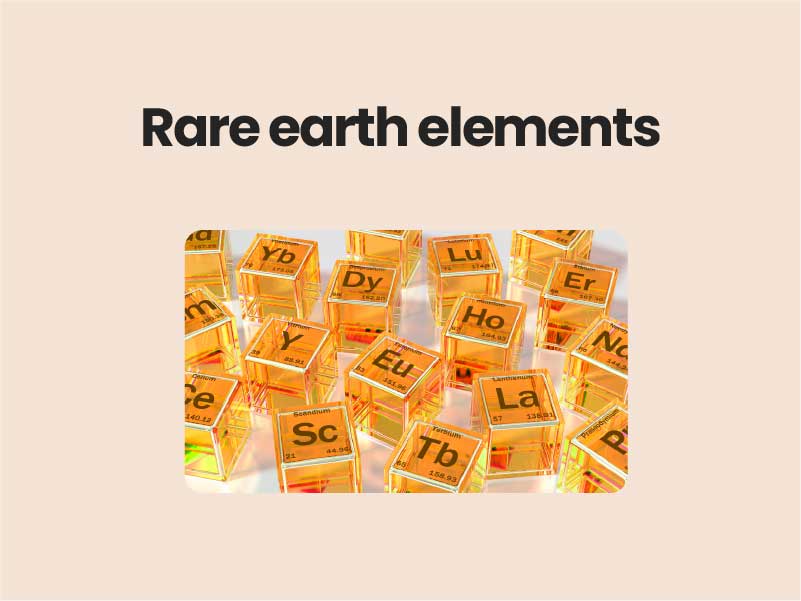Companion@360 → 7 Month programme to sharpen your writing skills → REGISTER NOW

Rare earth elements and its Importance
Why in News? The US Army plans to fund the construction of a Rare Earths elements processing facility to secure the domestic supply of minerals that are used to make military weapons and electronics.
“Rare earth” are a group of 17 chemically similar elements crucial to the manufacture of many hi-tech products. Despite their name, most are abundant in nature but are hazardous to extract.
Most “rare earth” elements have used in several different fields, as well as those listed below.
- Neodymium: This is used to make powerful magnets used in loudspeakers and computer hard drives to enable them to be smaller and more efficient. Magnets containing neodymium are also used in green technologies such as the manufacture of wind turbines and hybrid cars.
- Lanthanum: This element is used in camera and telescope lenses. Compounds containing lanthanum are used extensively in carbon lighting applications, such as studio lighting and cinema projection.
- Cerium: Used in catalytic converters in cars, enabling them to run at high temperatures and playing a crucial role in the chemical reactions in the converter. Lanthanum and cerium are also used in the process of refining crude oil. Yttrium is used in the process of generating colour displays on devices such as television screens
- Praseodymium: Used to create strong metals for use in aircraft engines. Praseodymium is also a component of a special sort of glass, used to make visors to protect welders and glassmakers.
- Gadolinium: Used in X-ray and MRI scanning systems, and also in television screens. Research is also being done into its possible use in developing more efficient refrigeration systems.
- Yttrium, terbium, and europium: Important in making televisions and computer screens and other devices that have visual displays as they are used in making materials that give off different colours. Europium is also used in making control rods in nuclear reactors.
Global Production of Rare Earths
Global Production of Rare Earths Significant amounts of rare earth elements is produced in only a few countries. China is the dominant producer of Rare earth elements and is believed to be responsible for over 97% of the world mine production on a rare earth oxide equivalent basis. Other countries with notable production in 2009 were: India, Brazil, Kyrgyzstan and Malaysia. Minor production may have occurred in Indonesia, Commonwealth of Independent States, Nigeria, North Korea and Vietnam.
Read Also Urban Naxalism
However, because of their geochemical properties, rare earth elements are typically dispersed and not often found concentrated in economically exploitable ore deposits.
RARE EARTH MINERALS IN INDIA
Despite having reasonably large resources in the country, historically India does not have a place in the global rare earth industry ecosystem.
- As of 2017, China has 36.6% of world resources, followed by Vietnam which has 18.3% of resources while India holds about 6% of the world’s rare earth reserves. India, however, produces less than 2% of the total Rare Earth (RE) Oxide produced globally. This disparity highlights an underutilization of resources and at the same time, merely selling the oxides might not be the best strategy across all the rare earth elements.
- In India, certain REs are present in much larger quantities than others. These are Lanthanum, Cerium, Praseodymium, Neodymium, Samarium, Gadolinium, Yttrium and Dysprosium.
- Over the years India’s efforts have grown noticeably from being engaged in purely mining efforts to set up facilities that can separate high purity rare earth elements. These changes span decades from the 1950s to 2012. The setting up of separation plants PRYNCE and HERO by Indian Rare Earth Limited (IREL) allowed the separation of almost all rare earth elements, however, not all of these elements were commercialized.
Read Also Industrial Relations Code Bill
